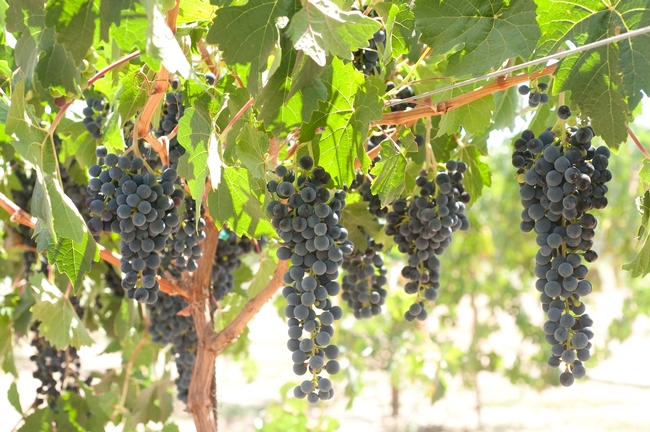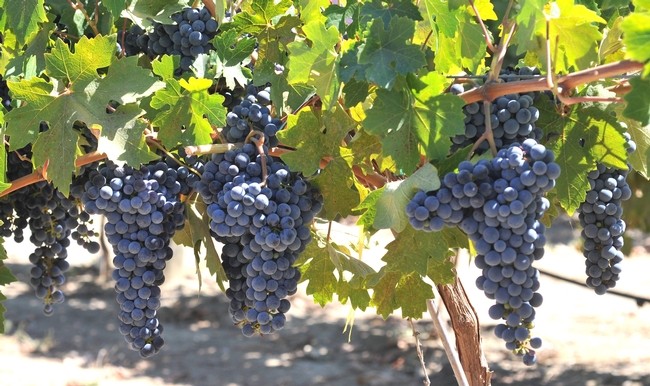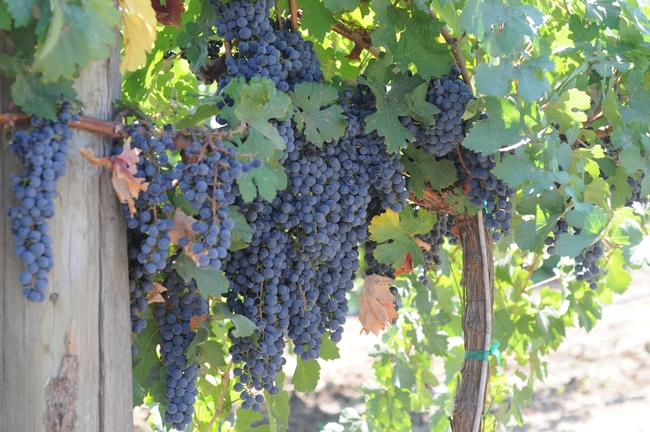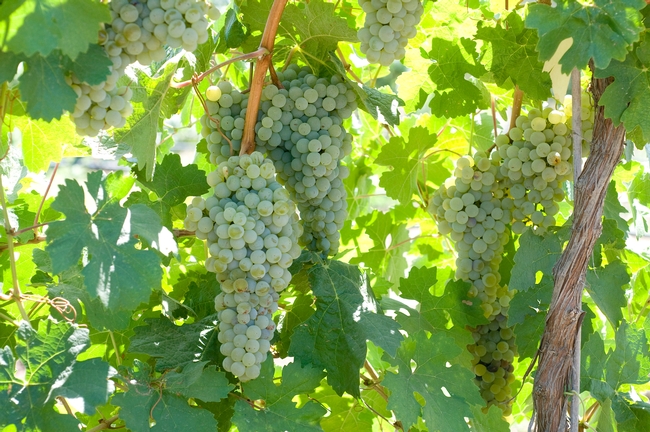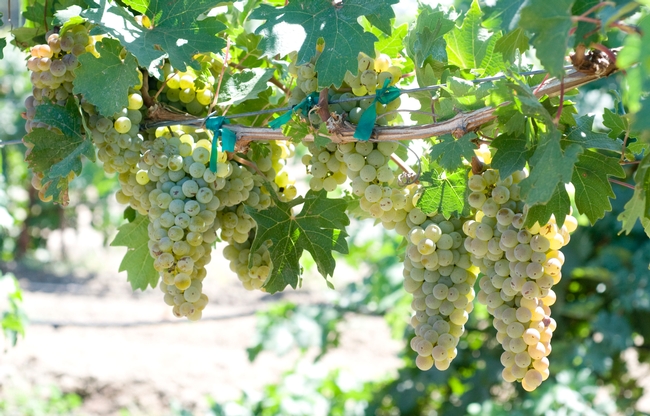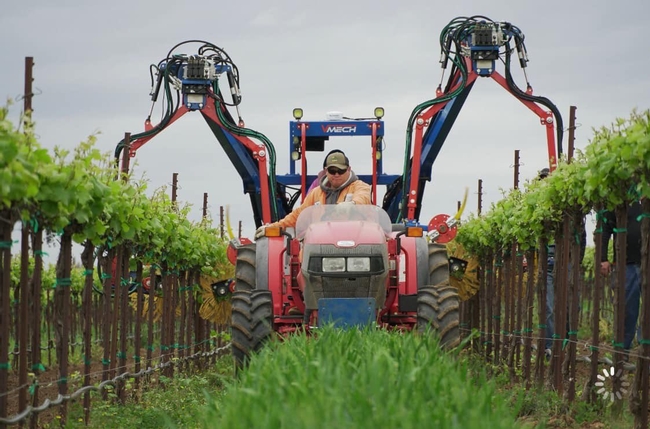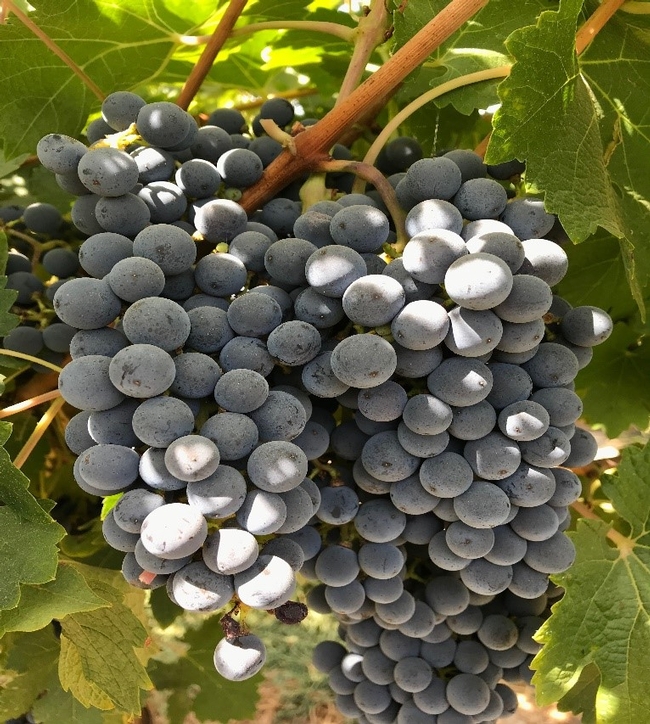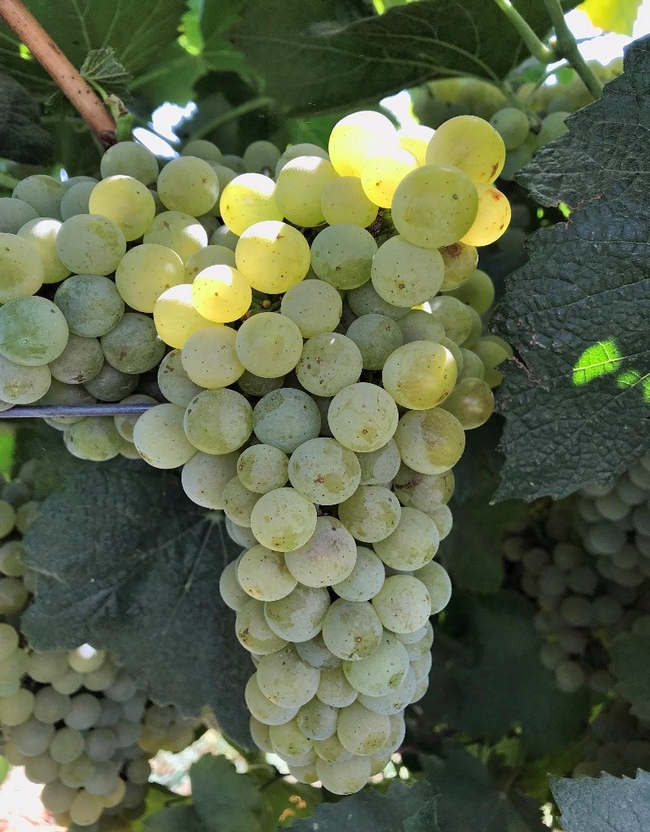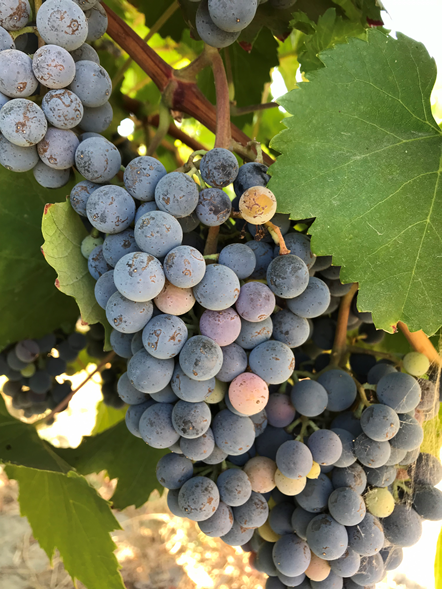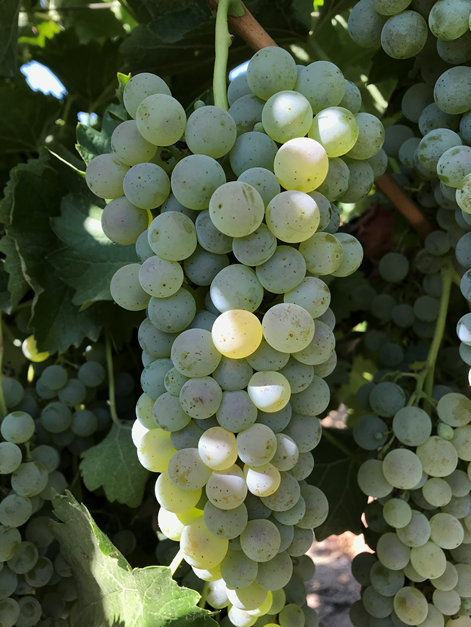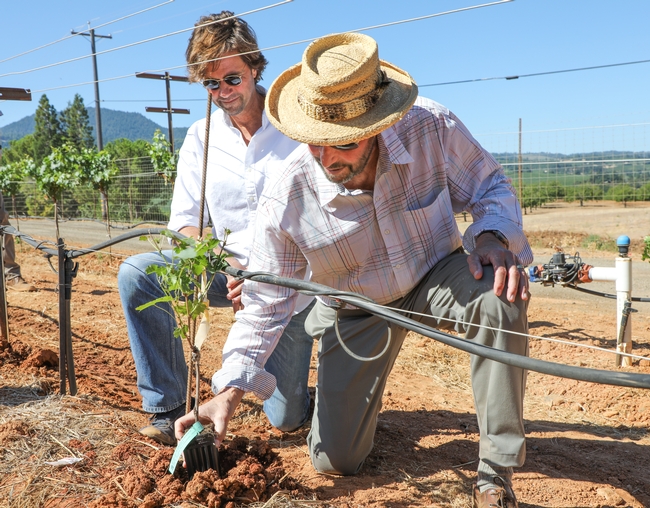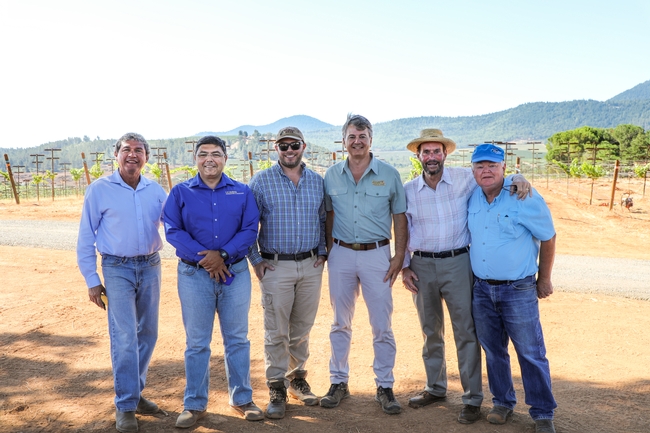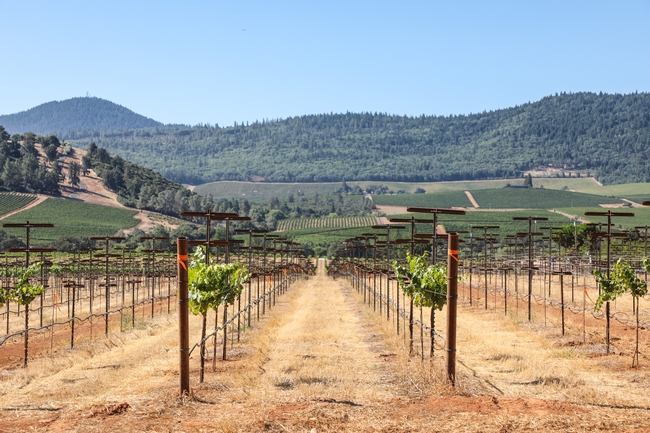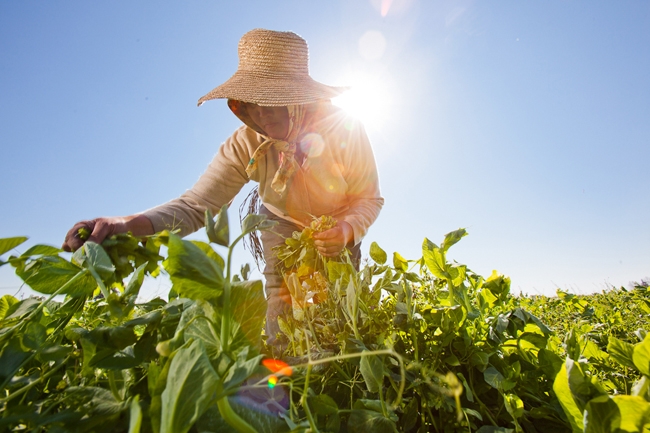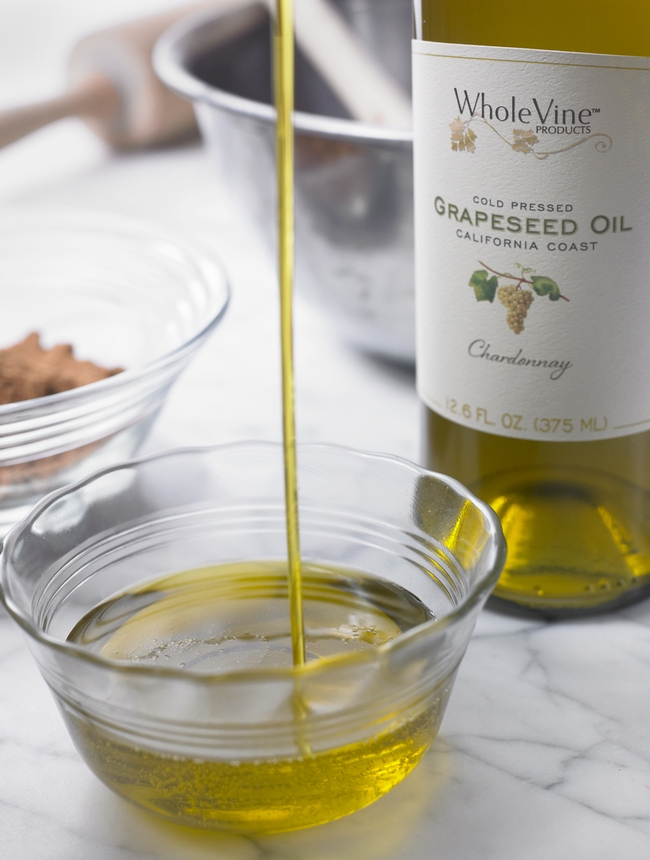Posts Tagged: winegrapes
UC Davis releases 5 grape varieties resistant to Pierce’s disease
For the first time since the 1980s, University of California, Davis, researchers have released new varieties of wine grapes. The five new varieties, three red and two white, are highly resistant to Pierce's disease, which costs California grape growers more than $100 million a year. The new, traditionally bred varieties also produce high-quality fruit and wine.
“People that have tasted the wine made from these varieties are extremely excited,” said Andrew Walker, geneticist and professor of viticulture and enology at UC Davis, who developed the new Pierce's disease-resistant varieties. “They are impressed that they're resistant, but also that they make good wine.”
Pierce's disease a growing threat
Pierce's disease is caused by a bacterium spread by a group of insects called sharpshooters. It causes grapevine leaves to yellow or “scorch” and drop from the vine. The grape clusters also dehydrate, and infected vines soon die. While the disease has been around since the beginning of wine grape production in California, concerns have escalated with the arrival of the nonnative glassy-winged sharpshooter, which has the potential to spread the disease more rapidly. Pierce's disease occurs most often near rivers and creeks, and around urban and rural landscaping where sharpshooter populations reside.
Pierce's disease also threatens wine grapes in the southeastern U.S. Rising temperatures from climate change could increase the spread of the disease, which is thought to be limited by cold winters. Growers in the Southeast can usually only grow Pierce's disease resistant varieties that don't have the same wine quality as the European winegrape species, Vitis vinifera, which is typically grown in California.
New varieties more sustainable
To create the new varieties, Walker crossed a grapevine species from the southwestern U.S. and northern Mexico, Vitis arizonica, which carries a single dominant gene for resistance to Pierce's disease and was used to cross back to Vitis vinifera over four to five generations. It's taken about 20 years to develop the five patent-pending selections that are now being released.
“These varieties will hopefully make viticulture much more sustainable and provide a high-quality wine that the industry will welcome,” said Walker. “So far there has not been tremendous interest in new wine grape varieties, but climate change may encourage growers to reconsider wine grape breeding as we work to address future climates and diseases.”
Winemaker Adam Tolmach, owner of The Ojai Vineyard in Ojai, planted four of the new varieties as part of a 1.2-acre experimental field trial. The trial was on the same plot of land where Pierce's disease wiped out his grapes in 1995. The vineyard then and now is organic, so spraying insecticides to fight the disease spread wasn't an option.
“I wasn't interested in planting in that plot again until I heard about these new Pierce's disease-resistant grape varietals,” said Tolmach. “This year was the first harvest. We've just begun to evaluate the wine but I'm very encouraged.”
Five varieties to suit every taste
The five new varieties of wines were evaluated by sensory tasting panels. Tasters included leading industry winemakers and enologists in prominent wine-growing regions of California and Texas as well as regions in the southeastern U.S.
“What I think is exciting is that they're stand-alone varieties independent of whether they have Pierce's disease resistance,” said Doug Fletcher, former vice president of winemaking for Terlato Family Wine Group.
The three new red varieties are camminare noir, paseante noir and errante noir.
Camminare noir has characteristics of both cabernet sauvignon and petite sirah. The selection has ranked highly at numerous tastings of fruit grown in both Napa and Davis. Tasting comments: dark-red purple color, bright red fruit, raspberry, cherry, ripe, tannic, elegant rather than dense. The variety is 50% petite sirah and 25% cabernet sauvignon.
Paseante noir is similar to zinfandel. It has also been ranked highly at tastings. Tasting comments: medium dark red with purple; berry pie, cassis, black olive, herbal, dried hay, coffee, vegetal like cabernet sauvignon, licorice, round, moderate tannins, soft finish. The variety is 50% zinfandel, 25% petite sirah and 12.5% cabernet sauvignon.
Errante noir is a red winegrape most similar to a cabernet sauvignon and has great blending potential. Tasting comments: dark-red purple color; complex fruit with herbs and earth, plum, big wine, dense, rich middle, tannic yet balanced. The variety is 50% sylvaner and 12.5% each of cabernet sauvignon, carignane and chardonnay.
The two new white grape varieties are ambulo blanc and caminante blanc.
Ambulo blanc is similar to sauvignon blanc and has been tested in Temecula, Sonoma and along the Napa River. Tasting comments: light straw to clear color, citrus, lime, tropical, gooseberry, golden delicious apple flavors; bright fruit, slightly bitter, textured. The variety is 62.5% cabernet sauvignon, 12.5% carignane and 12.5% chardonnay.
Caminante blanc has characteristics of sauvignon blanc and chardonnay. Wines have been made from Davis fruit and ranked well. Field trials are underway at Pierce's disease hot spots in Ojai and Napa. Tasting comments: light straw-gold color, apple-melon, lychee, floral aromas, pineapple, green apple, juicy, harmonious, well-balanced. The variety is 62.5% cabernet sauvignon, 12.5% chardonnay and 12.5% carignane.
These five varieties are ready for patenting and release. There will be limited amounts of plant material available for propagation in 2020 as only a few of the grape nurseries participated in a pre-release multiplication program. Much more will be available in 2021. The Pierce's disease resistance breeding program continues, and more selections are approaching release.
UC releases new cost studies for mechanized winegrape production
New studies provide details about trellis type, planting density, cost and potential benefit of vineyard mechanization
UC Agriculture and Natural Resources' Agricultural Issues Center has released four new studies detailing the costs and returns of wine grape production in the southern San Joaquin Valley. All four cost studies illustrate the cost and benefit of nearly full mechanization on wine grape production.
The studies estimate the cost of establishing a vineyard and producing wine grapes, focusing on four wine grape varieties – Cabernet Sauvignon, Chardonnay, Rubired and Colombard.
“Those studies take into consideration mechanical pruning, leafing, shoot thinning, and harvest on a typical wine grape vineyard with the average production level for this region,” said George Zhuang, UC Cooperative Extension viticulture advisor in Fresno County.
“With farming labor becoming more scarce and expensive, growers will opt to transition into more mechanization,” Zhuang said. “These studies provide detailed information about the trellis type, planting density, cost and potential benefit of vineyard mechanization. Based on these studies, fully implemented mechanization reduces the production cost from $3,000 to $2,500 per acre and that represents 17% cost reduction. This information will ultimately help growers to guide their production practices to more profitable and competitive ways under the new era of farming labor.”
Wine grape growers should look at the costs, particularly expenses associated with mechanization, Zhuang said.
“The investment to purchase and own equipment can be high,” Zhuang said. “Fortunately, it is easy to find a contractor in this region to perform certain vineyard tasks, if the initial investment to purchase equipment is prohibitive.”
Numerous studies, including UC studies, have confirmed the benefits of vineyard mechanization to grape and wine quality with lower production costs.
“It is a win-win-win situation,” Zhuang said. “Growers can improve their farming margins, wineries and juice processing plants can get reliable and higher quality grapes and juice from farms, and average consumers can enjoy better wine and more healthy grape products at an affordable price.”
The studies are based on 200-acre farms with the vineyard established on 40 acres using two types of trellis systems – quadrilateral cordon system and bilateral cordon system. In addition to regular grape production expenses – such as irrigation, fertilization and pest control – the researchers broke out the differences between machinery costs and hand labor hours required for thinning, pruning and harvesting for each variety.The prices for labor, materials, equipment and custom services are based on October 2019 figures.
The California minimum wage law will gradually decrease the number of hours employees can work on a daily and weekly basis before overtime wages are required. For more information and to view the California minimum wage and overtime phase-in schedules visit aic.ucdavis.edu.
Input and reviews were provided by UC Cooperative Extension farm advisors, specialists, grower cooperators and other agricultural associates. The authors describe the assumptions used to identify current costs for wine grape establishment and production, material inputs, cash and non-cash overhead. A ranging analysis table shows profits over a range of prices and yields.
The new studies are:
- 2019 - Sample Costs to Establish and Produce Winegrapes in the Southern San Joaquin Valley – Chardonnay Variety
- 2019 - Sample Costs to Establish and Produce Winegrapes in the Southern San Joaquin Valley –Cabernet Sauvignon Variety
- 2019 - Sample Costs to Establish and Produce Winegrapes in the Southern San Joaquin Valley – Rubired Variety
- 2019 - Sample Costs to Establish and Produce Winegrapes in the Southern San Joaquin Valley – Colombard Variety
All four winegrape studies can be downloaded from the UC Davis Department of Agricultural and Resource Economics website at http://coststudies.ucdavis.edu. Sample cost of production studies for many other commodities are also available on the website.
For additional information or an explanation of the calculations used in the studies, contact Donald Stewart at the Agricultural Issues Center at (530) 752-4651 or destewart@ucdavis.edu.
For information about local grape production, contact George Zhuang, UCCE viticulture advisor for Fresno County, at gzhuang@ucanr.edu; UCCE viticulture specialist Matt Fidelibus at mwfidelibus@ucanr.edu; UCCE viticulture specialist Kaan Kurtural at skkurtural@ucdavis.edu; Karl Lund, UCCE viticulture advisor for Madera, Merced and Mariposa counties, at ktlund@ucanr.edu; or Gabriel Torres, UCCE viticulture advisor for Kings and Tulare counties, at gabtorres@ucanr.edu.
To save cabernet from climate change, UC studies rootstock and clone combinations
UC Cooperative Extension, Beckstoffer Vineyards and Duarte Nursery are launching the wine industry's most ambitious cabernet sauvignon rootstock and clone trial in the Red Hills of Lake County to give the varietal greater resilience to climate change.
Cabernet sauvignon is California's second top-selling varietal by volume, just behind chardonnay.
“We have been growing cabernet sauvignon since the 1970s, and we are very proud to be part of this trial, which will help improve cabernet sauvignon growing for years to come,” said Andy Beckstoffer, owner and CEO of Beckstoffer Vineyards, which is providing the land and labor for the project.
The industry-driven trial – “Climate-smart Solutions for Cabernet Sauvignon Production” – includes 3,600 vines with 10 cabernet sauvignon clones on 10 rootstocks.
“This trial will give us data that will help inform and improve growing practices for cabernet sauvignon across the state for the next two decades,” said the trial's lead researcher, S. Kaan Kurtural, UC Cooperative Extension viticulture specialist at UC Davis Department of Viticulture and Enology and Oakville Experiment Station.
While the experimental vineyard is in Lake County at a property known as Amber Knolls, the data will be analyzed in Oakville.
The trial officially launched Aug. 15 in Kelseyville with a celebratory vine planting as Andy Beckstoffer and son David Beckstoffer planted the vine that also marked a milestone – the 1.5 millionth vine for Beckstoffer Vineyards Red Hills. Researchers, industry representatives and journalists gathered to celebrate what is affectionately known as “the mother of all cabernet trials.”
“Everything is wonderful in Lake County – for growing cabernet sauvignon and for doing research,” Andy Beckstoffer said, noting the Lake County region's ongoing support for farming.
Pedro Rubio, Beckstoffer Vineyards Red Hills general manager, said, “Lake County will definitely benefit, but the results from this trial will be very helpful for the whole industry.”
Designed to address resiliency in a changing climate, the trial will examine which combinations give the best results with a focus on drought tolerance and water-use efficiency as well as crop yield and grape quality.
“The idea behind the trial is to gain further insights into the interactive effects of rootstock selections crossed with cabernet clones and the impact of that on water relations and overall sustainability,” said Clint Nelson, ranch manager for Beckstoffer Vineyards Red Hills.
“The trial will give us an understanding of the synergistic relationship of clone and rootstock and what combination drives the best quality and production,” he said.
According to Nelson, the trial will look at canopy architecture, yield components, water relations, traditional fruit chemistries, secondary metabolites such as aroma, mouthfeel and color, as well as overall vine performance.
Duarte Nursery is providing all of the planting material for the trial.
“The diversity of rootstocks and clones chosen for this project includes some of the most modern cabernet sauvignon clones designed for high quality and for production,” said John Duarte, nursery president.
Duarte said the trial is employing a lot of cutting-edge technology and using some of the cleanest plant materials available to prevent grapevine viruses.
“Planting a vineyard with pristine nursery stock initially really extends the life of that vineyard,” Duarte said.
Viticulture has become more data-driven, and this trial will measure a staggering amount of data generated by the 100 or so rootstock-clone combinations over the approximately eight to 10 years of the trial's duration.
“Nothing of this scope has been attempted,” said UC Cooperative Extension specialist Kurtural, who acknowledged logistics as the biggest challenge with planning, data collection and timely analysis being at the forefront of his mind. “It keeps me up at night.”
Planning for the length of the project also is a concern. The vineyard will be planted this year and the first crop will be harvested in 2021. It will take at least six years to begin to see consistent results.
Kurtural said the project will provide research opportunities in academic and applied science for at least two students to complete work toward a doctoral degree in horticulture and agronomy.
Glenn McGourty, UC Cooperative Extension viticulture advisor for Lake and Mendocino counties, is a research collaborator on the project.
“Lake County obviously has an important role to play in fine wine in the North Coast, particularly for cabernet sauvignon,” McGourty said. “And this trial really marks the importance of this location in terms of the commitment and the collaboration that we see here among both public and private sectors.”
About Beckstoffer Vineyards: Named “Napa's most powerful grape grower” by both the Wall Street Journal and Wine Spectator, Beckstoffer Vineyards was founded in 1970. Beckstoffer Vineyards is firmly rooted in the soil of Northern California's wine country, with Andy Beckstoffer playing an integral role in the evolution of the wine grape industry since 1970. Joined at the family-owned business by his son David in 1997, they share a common mission – to produce the highest quality grapes in Northern California that form the foundation for exceptional wines – and a combined passion for the land and viticulture expertise. Beckstoffer Vineyards first acquired land in the Red Hills in 1997, which after subsequent acquisitions, today totals nearly 2,000 planted acres across three blocks: Amber Knolls Vineyard, Crimson Ridge Vineyard, and Amber Mountain Vineyard.
About Duarte Nursery: Duarte Nursery, Inc. (DNI) is a family-owned and operated nursery and the largest permanent crops nursery in the United States.
Cultivating California
Only in California could arid land be converted into the nation’s salad bowl.
In the late 1800s, University of California researchers discovered how to remove salts from the soils of the Central Valley, turning it into one of the most productive agricultural regions.
UC researchers continue to play a key role in agriculture today, keeping California the nation’s leading agricultural state, from dairies in Tulare to nut farms in Newberry Springs.
A new brochure highlights the breadth of UC Agriculture and Natural Resources’ impact. UC guidelines have helped farmers boost broccoli production. UC scientists have developed sweet-tasting citrus and strawberries to meet consumer demands. UC certifies more than 95 percent of wine grapevines grown in the state, providing a reliable supply of high-quality vines for California’s multibillion-dollar wine industry. Whether it’s managing invasive pests, promoting nutrition or sustaining small farmers, ANR serves California’s communities with a focus on advising, educating and searching for solutions.
For more information, read the Cultivating California brochure.

uc anr minibrochure cover s2
How waste becomes gourmet food
I attended the Fancy Food Show in San Francisco in January and I was delighted with the offerings from local companies near UC Davis. Since I attended this vast international exhibit, I have purchased several local products that I discovered at the show. The exhibit was so large, I was only able to see half of it in a day. I met Matthieu Kohlmeyer, the French CEO and General Manager of La Tourangelle, whose walnut oils are processed 15 minutes away in Woodland.
I was also impressed with Mezzetta pasta sauces from Napa. I have purchased their olives and fire-roasted peppers for years, so why did I fail to notice their pasta sauce among the endless brands on the shelves? Unfortunately, my favorite in their line, Puttanesca, was not on the shelf at my grocer, but I found the spicy Arrabbiata, my second favorite tasting at the show.
As I looked for the locals I looked in vain for a local grape seed oil. The Italians were selling grape seed oil at wholesale prices that were surprisingly low. Meanwhile, I knew that grape seeds in our nearby wine regions are still largely treated as waste, just as UC Davis olives were treated before our former grounds manager Sal Genito partnered with a local olive oil company to launch a gourmet brand of oil at UC Davis.
To my delight, Sacramento Bee Food & Wine writer Chris Macias featured WholeVine grape seed oil on the March 14 food page. Its parent company is a successful local start-up, SonomaCeuticals, Santa Rosa, who developed the process to extract the oil from local grapes.
Not surprisingly, UC Davis was involved. Sharon Shoemaker, director of the UC Davis' California Institute of Food and Agricultural Research (CIFAR), was interviewed about her role in helping SonomaCeuticals tap into campus expertise. WholeVine grape seed oil is cold pressed, allowing it to retain the natural flavors of chardonnay, zinfandel, reisling and other winegrape seeds. The flavor provides an added bonus to a naturally high smoke point and health benefits. This commands a higher price than imported oils and allows the firm to compete in this market.
Shoemaker and her program CIFAR (see-far) are champions of campus research. Since 1992, her dynamic energy has been sustained through private enterprises that pay for her business-friendly conferences and services to benefit small and large concerns. Rarely does the public see how often executives drop in to tap into UC Davis resources. This happens behind the scenes with little fanfare, except this time, when the nuances of a new product triumph came to light on the food page. All of us can now enjoy the benefits.


